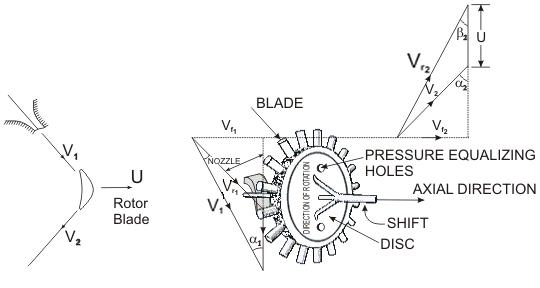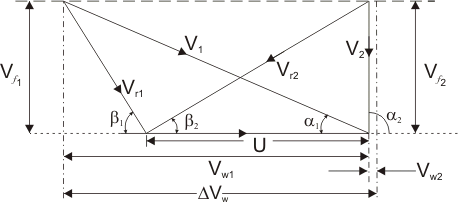Have you considered a Tesla Turbine without the "support/impact" bar (or whatever you call it?).
I reckon my Tesla turbine needs 87,000rpm to reach "sonic" perimeter speed. (Using speed of sound in air at atmospheric pressure). I understand the full "tesla" effect does not happen until the discs approach that speed.
Or maybe the "Impact" bar without the Tesla turbine? (like a Pelton wheel?). The circumference will then only max at ~0.5 x sonic speed or ~44,000rpm for a 3 in rotor.
I still believe they are such conflicting technologies that you should have one or the other as with both you get the worst of both ideas?
The De Laval turbine is described here:
https://archive.nptel.ac.in/content/storage2/courses/112104117/chapter_6/6_6.html
With an extract here to give you a taste of the design (for those that don't know- like me!).
- The Single-Stage Impulse Turbine
The single-stage impulse turbine is also called the de Laval turbine after its inventor. The turbine consists of a single rotor to which impulse blades are attached. The steam is fed through one or several convergent-divergent nozzles which do not extend completely around the circumference of the rotor, so that only part of the blades is impinged upon by the steam at any one time. The nozzles also allow governing of the turbine by shutting off one or more them.
The velocity diagram for a single-stage impulse has been shown in Fig. 22.1. Figure 22.2 shows the velocity diagram indicating the flow through the turbine blades.
Figure 22.1 Schematic diagram of an Impulse Trubine
and
= Inlet and outlet absolute velocity
and
= Inlet and outlet relative velocity (Velocity relative to the rotor blades.)
U = mean blade speed
= nozzle angle,
= absolute fluid angle at outlet
It is to be mentioned that all angles are with respect to the tangential velocity ( in the direction of U )
Figure 22.2 Velocity diagram of an Impulse Turbine
and
= Inlet and outlet
blade angles
and
= Tangential or whirl component of absolute velocity at inlet and outlet
and
= Axial component of velocity at inlet and outlet
Tangential force on a blade,
(mass flow rate X change in velocity in tangential direction)
or,
Blade efficiency or Diagram efficiency or Utilization factor is given by
It gets into Maths that depart from my understanding after this...




























